content provided by Monrovia
Spring has sprung in many parts of the country, and hungry pollinators are on the wing, looking for food. Just as we need meals to fuel us throughout the day, pollinators need food throughout the seasons. From the moment, they wake up in the spring to the time that they hibernate or migrate in the fall, pollinators need to eat. And we’re not just talking about honey bees, but also native bees, butterflies, moths, birds and bats, beetles, flies, and the list goes on.
Planting early blooming perennials is one of the easiest things for a gardener to do. The reward is in those delicate first early blooms after the rugged and bleak landscape of winter. Bonus – early bloomers are some of the toughest and easiest care plants around since many can handle cold. Get started with these early bloomers.
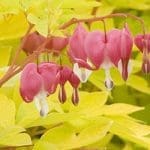 Gold Heart Bleeding Heart
Gold Heart Bleeding Heart
A darling of the shade garden, bleeding hearts were loved by Grandma and are just as popular today. Poetically and aptly named, these plants are heavy with pollen-rich flowers that seem to drip from the stems. This variety’s vivid golden foliage can be used for contrast and to brighten darker shade gardens. Heart-shaped pink flowers dangle from long wands. Zone: 3 – 9
Attracts: Native bees, honeybees
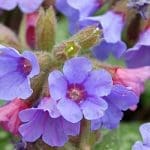 Trevi Fountain Lungwort
Trevi Fountain Lungwort
Lungwort blossoms change from pink or red to blue as the flowers age. Younger pink or red flowers have more pollen and nectar which signals to pollinators that dinner is served while blue blooms are not going to be as rewarding. Cool, huh? Bees, its primary pollinators, see very well into the ultraviolet and in that range of light, the color change is dramatic.
Attracts: Bees, night moths
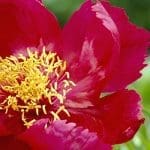 Early Scout Fernleaf Peony
Early Scout Fernleaf Peony
What: The redolent scent of peonies is a “come hither” lure for pollinators letting them know there’s yummy pollen and sweet nectar hidden inside those pretty petals. This one’s among earliest hybrid peonies to bloom! The open petals with huge clusters of pollen-rich, golden stamens make for easy pickings. Zone: 3 – 8
Attracts: Bees, moths, hummingbirds
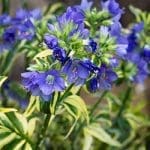 Variegated Jacob’s Ladder
Variegated Jacob’s Ladder
Many pollinators swarm for blooms with bell-shaped flowers that hint at nectar inside. Jacob’s Ladder produces sweet little blue blooms where little bees fit just right. This variety, Brise d’Anjou is particularly interesting with cream and green striped variegation that lends a pop of light to the shadier spots in the garden. Zone: 4 – 8
Attracts: Bees, hummingbirds, hoverflies
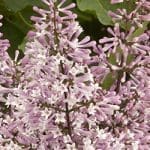 Miss Kim Korean Lilac
Miss Kim Korean Lilac
Who can resist a lilac shrub? Not most gardeners, and certainly not bees. It’s like planting perfume. Just remember they don’t like wet feet, and they set buds in summer, so only prune right after flowering is complete. Zone: 4 – 8
Attracts: Honeybees, leafcutter bees, hummingbirds, and butterflies including Two-tailed Swallowtail and Milbert’s Tortoiseshell
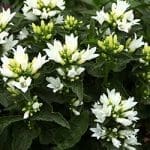 Genti White Bellflower
Genti White Bellflower
What: Compact flowering plants like this bellflower can have scores of bees working the plant at the same time. Clusters of tightly grouped, pure white, bell-shaped flowers bloom profusely through the summer. Remember, large blocks of the one plant are more attractive to pollinators than ‘one each of everything,’ so plant this one in a mass of many. Zone: 4 – 8
Attracts: Hummingbirds, bees, butterflies
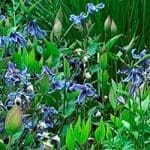 Blue Ribbons Bush Clematis
Blue Ribbons Bush Clematis
Hummingbirds love tubular flowers, especially pendant-shaped blooms that nod downward, as this helps stop nectar from being diluted by rain. This new bush-type clematis has indigo blue flowers that are larger and more prolific than similar varieties. After blooming, silvery seed heads develop, lasting into early winter, feasted on by migrating birds. Zone: 3 – 9
Attracts: Hummingbirds, hoverflies, bees
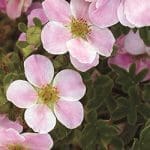 Pink Beauty Potentilla
Pink Beauty Potentilla
Plants with a long flowering period are especially valuable to bees. During bad weather they cannot leave their hive which can result in completely missing a short flowering period. This sweet little shrub (only 3-ft. tall and wide–so useful!) blooms from spring through fall and it’s flat, open petals makes it easy to drink up. Zone: 3 – 7
Attracts: Honeybees, native bees, moths, hoverflies
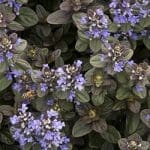 Chocolate Chip Carpet Bugle
Chocolate Chip Carpet Bugle
Low growing ground covers with early blooms provide a special service to bees, especially honey bees. Honeybees cannot pollinate with winds over 25mph, so the lower the food source during windy spring weather, the better. This dwarf, evergreen creates a tight mat of bronze-tinged foliage with purple spring flowers. Zone: 4 – 9
Attracts: Honeybees and native bees
Besides being just plain amazing to watch and enjoy, pollinators are vital to food and flower production, and without them gardening does not exist as we know it. Gardeners need only do what they already love to do! Plant plants!
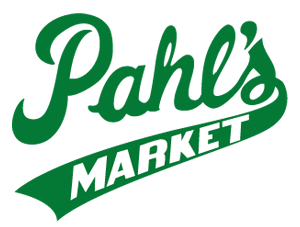
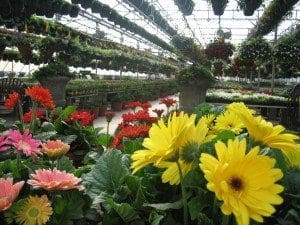
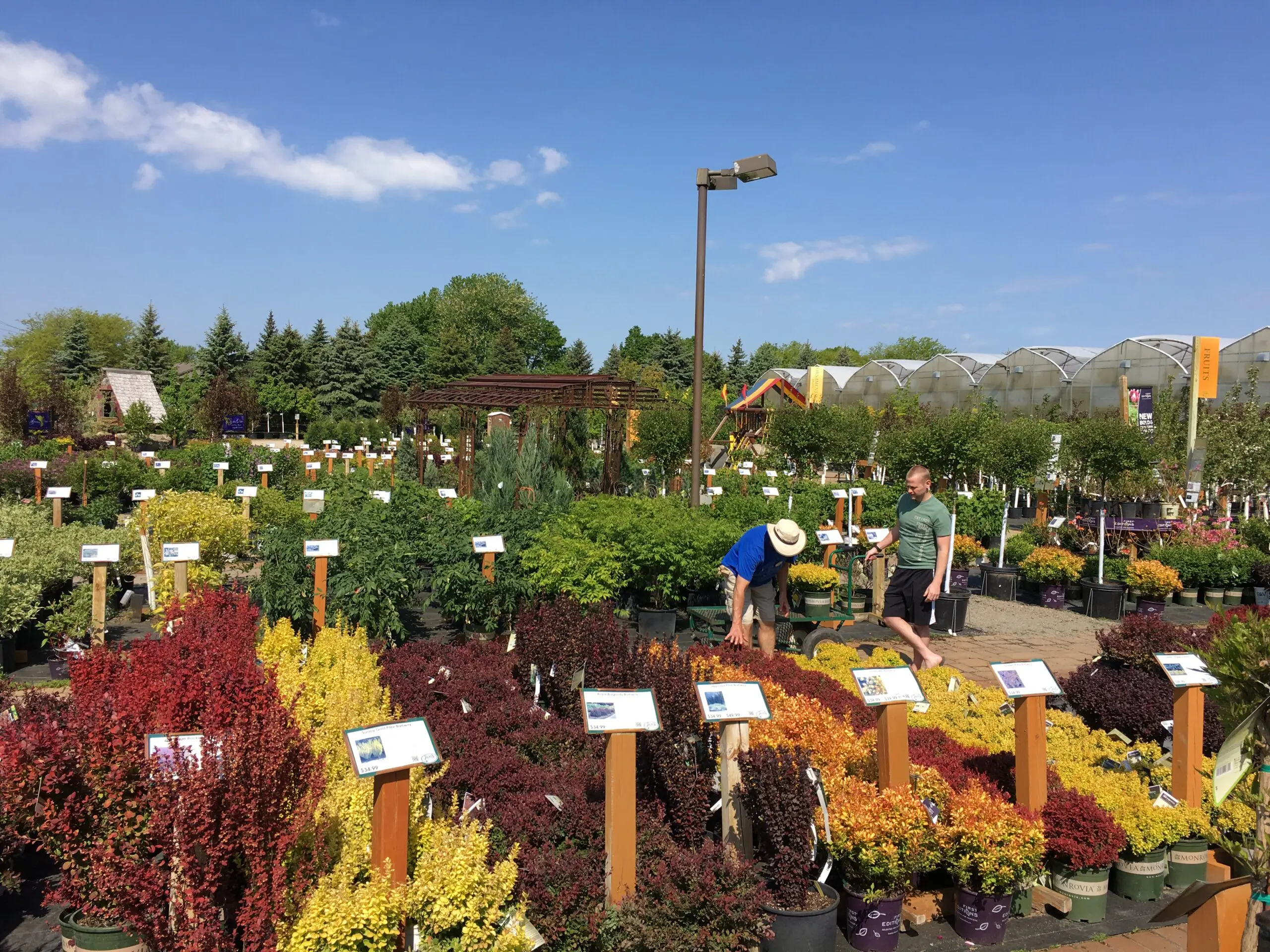
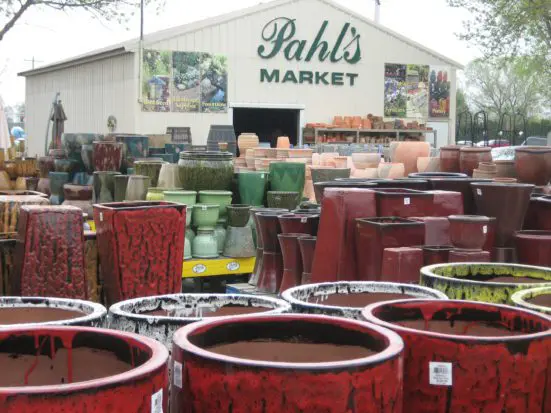
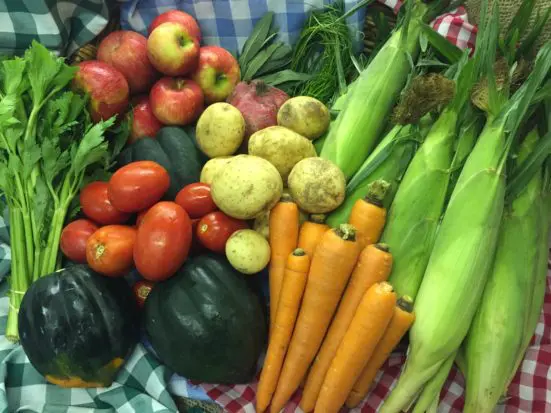


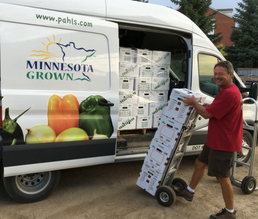




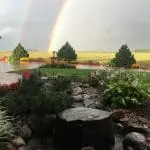
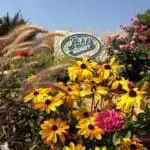


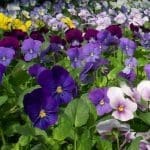
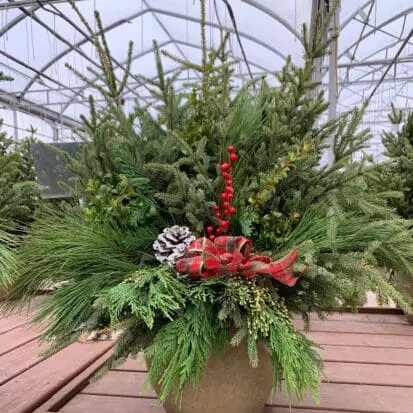
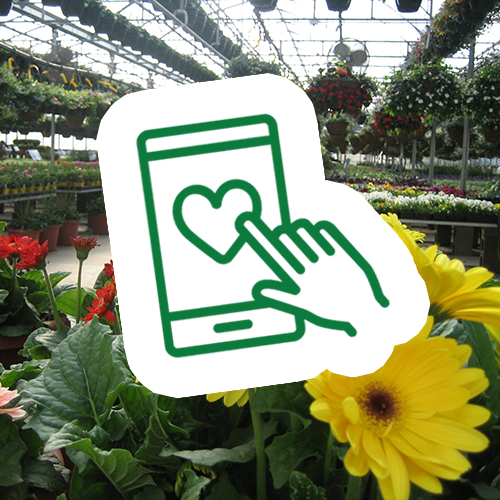
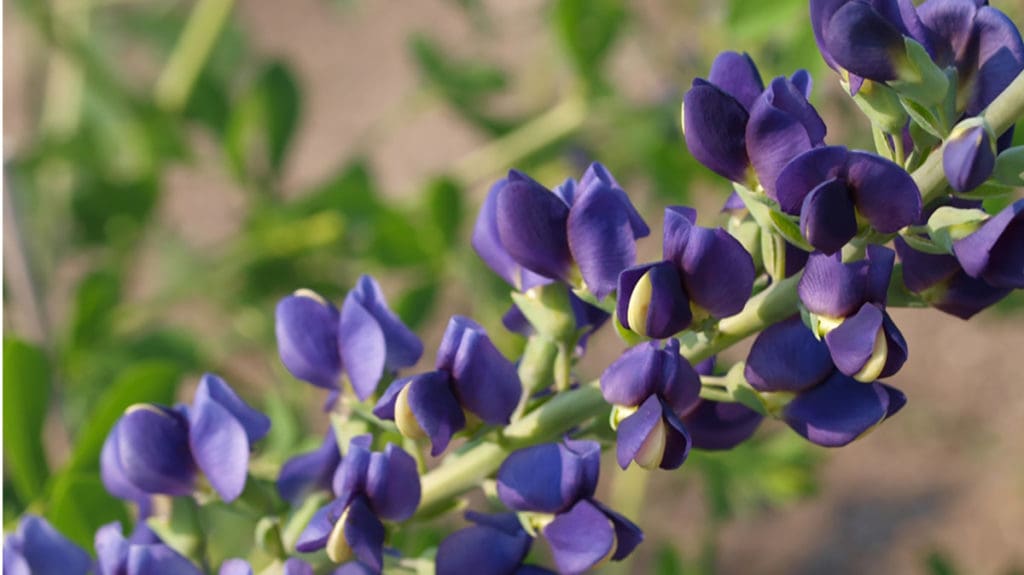
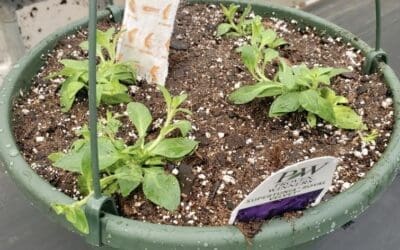
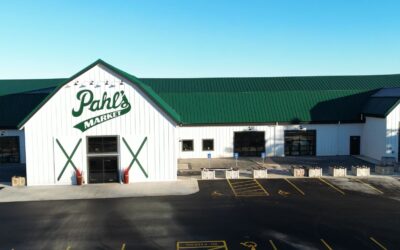

Thanks for your message Kathy! Yes, we have both a landscape department if you were interested in a consult and we also do custom plantings through the market if you have containers you’d like to drop off and have us plant. Or please feel free to stop in and visit with greenhouse staff in May and let them help with pollinator suggestions.